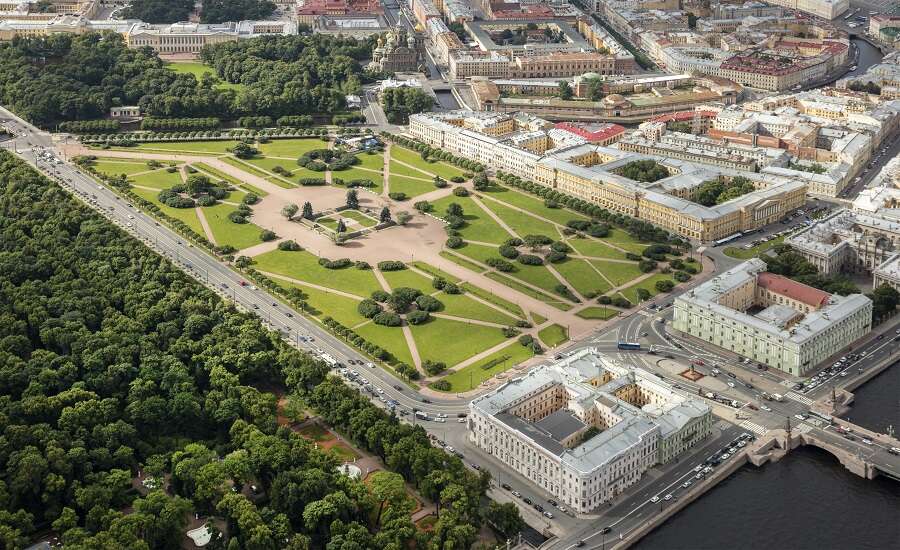
Photo by Andrew Shiva / Wikipedia, CC BY-SA 4.0, on Wikipedia
The Field of Mars is one of the largest green spaces in St Petersburg’s city centre, where local people and tourists like love to stroll, relax and have picnics. The 300-year history of this elegantly laid-out garden intertwines joyous festivities and celebrations with military history, revolution and war.
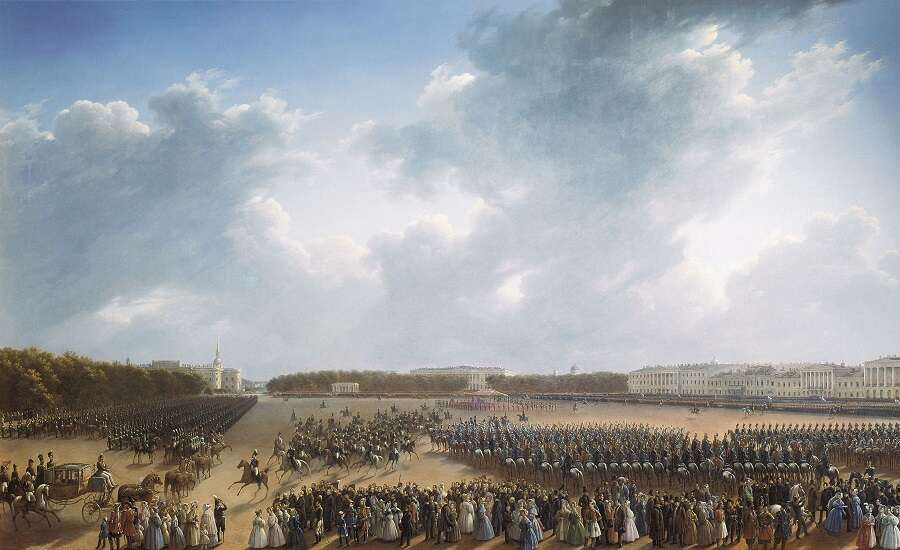
At the turn of the 18th century, this piece of land bordering the Neva was an overgrown, murky swamp. After the swamp was drained by Peter the Great a meadow remained, which was transformed into a military parade ground and place for festivals. One particularly spectacular celebration was organised in 1721 to honour military victory in the Great Northern War against Sweden, and was complete with fireworks and a triumphal arch erected on the meadow. In honour of this, the meadow was nicknamed Poteshnoye Pole, meaning ‘Field of Amusements’.
Mansions and palaces of the Russian aristocracy gradually filled the surrounding streets in the 18th century, and the summer palaces of Peter the Great’s wife and daughter, Catherine and Elizabeth Petrovna, were built nearby. From 1740 onward, under Empresses Anna and Elizabeth Petrovna, the meadow was carefully landscaped with lawns, pavilions, fountains, trees and walking paths. Now more of a pleasure garden than a meadow, people flocked there for leisurely promenades and attractions on public holidays. Two theatres were erected there in 1750 – the first opera house in Russia, built by Bartolomeo Rastrelli, and the Maly Theatre (unfortunately, neither remain today).
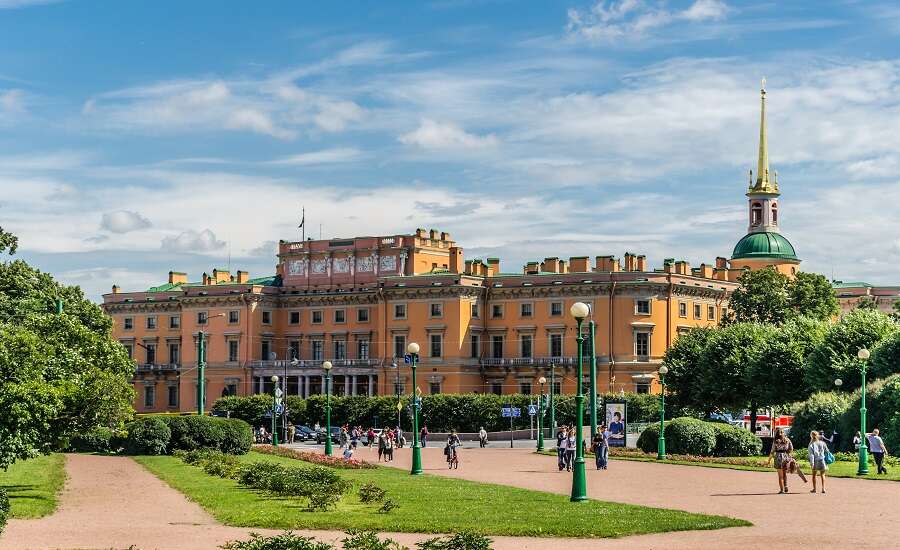
Photo by Alex 'Florstein' Fedorov, CC BY-SA 4.0, on Wikipedia
The beauty of the garden would not last. Severe floods in 1777 damaged the ornate lawns and landscaping and military parades resumed shortly after. Following in his grandfather Peter’s footsteps, Paul I organised military parades and exercises and built barracks alongside the garden. His son Alexander I continued this tradition, and renamed the parade ground ‘The Field of Mars’ in honour of the Roman god of war. Not only did this reinforce the military image of the Russian Empire, but it forged a connection with other great European cities, emulating the Champs de Mars in Paris and the Campus Martius in Ancient Rome.
Did you know? Thanks to the daily military drills, the verdant space was reduced to a dust bath. The marching soldiers kicked up such clouds that the Field of Mars became known as the ‘Petersburg Sahara’.
The Field of Mars remained St Petersburg’s main military parade ground from 1820 onwards, and folk festivals like Maslenitsa, Easter and the Emperor’s name day continued to take place there from 1869, celebrated with fairground rides, music, performances and refreshments. Other attractions arranged on the Field of Mars included art exhibitions, a summer cinema, reindeer rides, and a telescope to observe the solar eclipse of 1912.
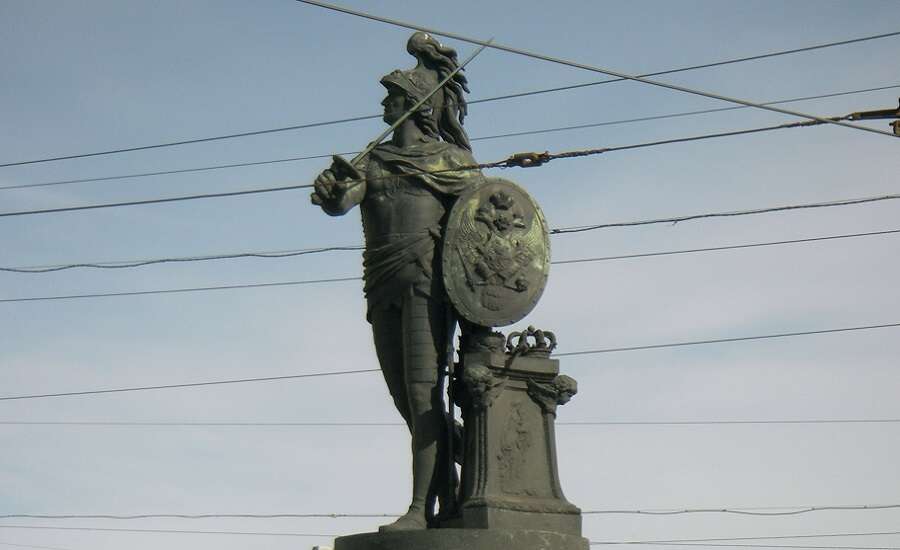
Photo by I, George Shuklin, CC BY 2.5,on Wikipedia
Did you know? A statue of great military leader Alexander Suvorov, cast in the likeness of the god Mars, is located on Surovovskaya Square which lies between the Field of Mars and the Neva.
Following the February Revolution of 1917, the follies of Imperial Russia came to an end. After discussions to decide where to bury victims of the February Revolution, the Field of Mars was chosen for the communal gravesite. However, when the families of the dead heard that the Bolsheviks planned to bury them without a funeral service, many rushed to reclaim their loved ones. In the end, 184 people were laid to rest in the Field of Mars, each coffin lowered to the sound of a cannon shot from the Peter and Paul Fortress, and 800,000 people flocked to attend the funeral. A memorial to the dead was designed by Lev Rudnev (later the architect of Moscow State University main building) with inscriptions for the mass graves written by Anatoly Lunacharsky (the People’s Commissar of Education). The Field of Mars was renamed ‘Square of the Victims of the Revolution’, and essentially became a pantheon to fallen revolutionaries up until 1933.
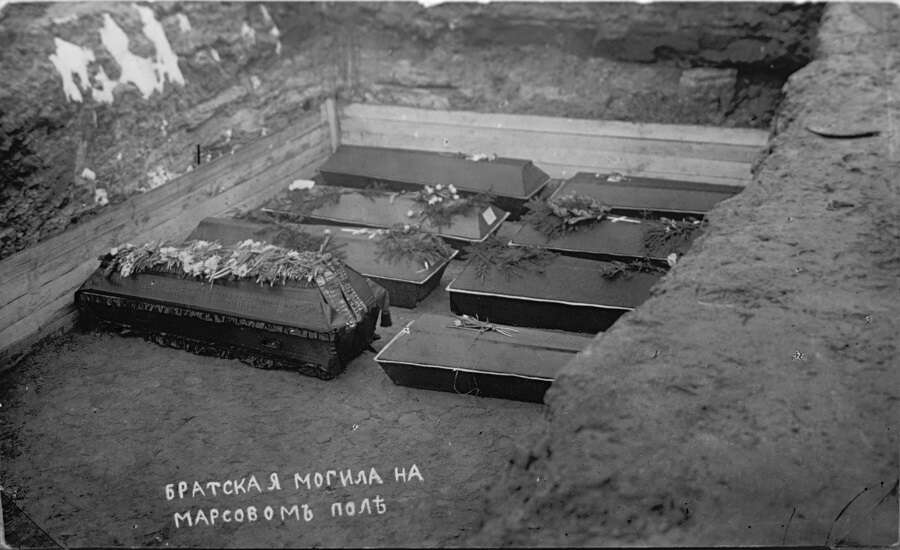
Photo retake by George Shuklin (talk) on Wikipedia
Did you know? During the Siege of Leningrad, the Field of Mars was covered with vegetable gardens to feed the starving population of the city.
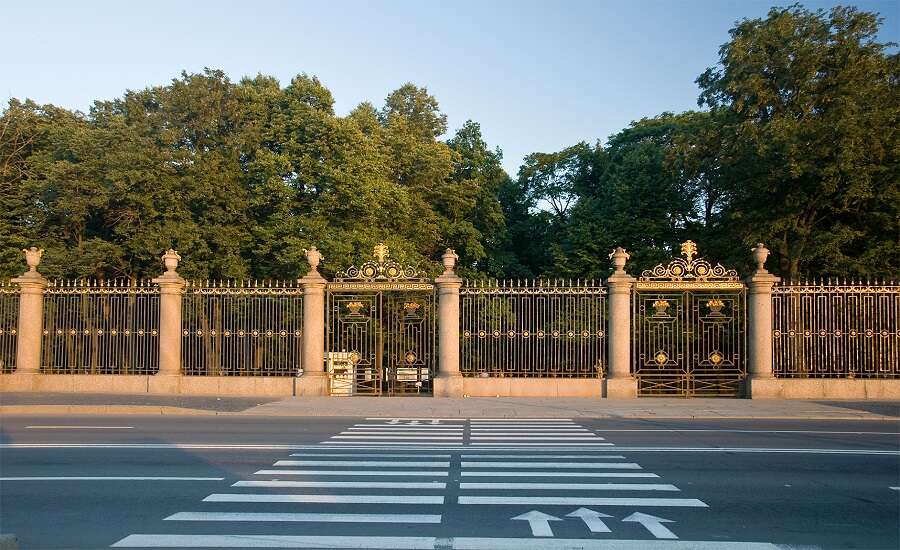
Photo by George Shuklin, CC BY-SA 1.0, on Wikipedia
Address: Field of Mars, St Petersburg, 191186
Opening hours: 24/7, entrance is free
Nearest metro: Nevsky Prospekt (1.1km) / Gostiny Dvor (1.3km) / Gorkovskaya (1.7km walk across Troitsky Bridge and the Neva)
Join us on Facebook
We invite you to become a fan of our company on Facebook and read Russian news and travel stories. To become a fan, click here.
Join our own Russian Travel, Culture and Literature Club on Facebook. The club was created to be a place for everyone with an interest in Russia to get to know each other and share experiences, stories, pictures and advice. To join our club, please follow this link.